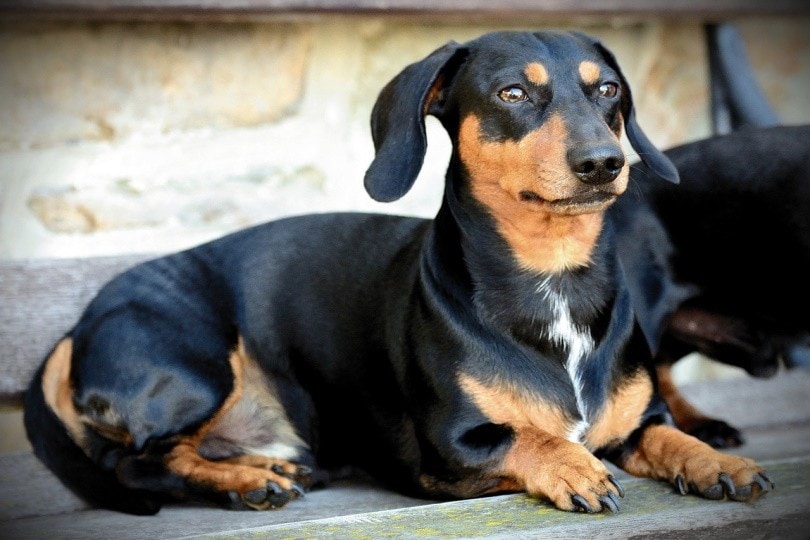
The Dachshund originates from Germany, where it was bred for hunting and is still used for this purpose today. However, it is far more likely that you will see one curled up on a sofa or charging around a park.
This breed is energetic, lively, loud, and loves to play. It is also loyal and fun. While it can make a great pet, it isn’t the ideal breed for all potential owners.
Below are 20 surprising Dachshund facts that can help you decide whether this is the right breed for you, or simply to quench your third for Dachshund knowledge.
The 20 Facts About Dachshunds
1. They Were Bred as Badger Hunters
The breed was initially developed in 15th Century Germany as a badger hunting hound. Its short legs and long body allowed the breed to chase badgers into their setts. They could dig the soil out and push it behind their body while propelling themselves forward into earthen tunnels.
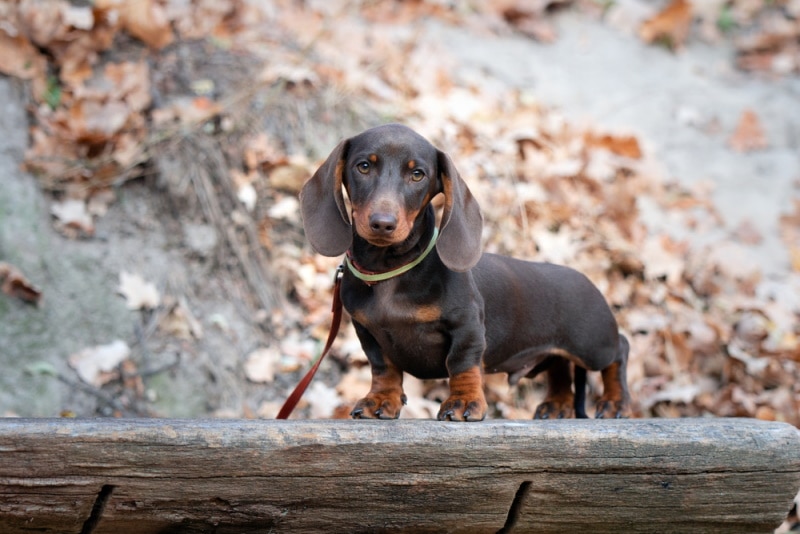
2. They Are Still Used for Hunting in Parts of Europe
Although the breed has become popular as a family pet, thanks to its loving and loyal nature, it is still used for hunting in some parts of Europe. As well as being used to flush animals out of holes in the ground, the Dachshund is also used for scenting and blood tracking, retrieving game, and even in packs to hunt down game like boars.
3. Dachshunds Still Have a High Prey Drive
Several hundred years of breeding as hunting dogs are difficult to forget, and the modern pet Dachshund still maintains many of the properties that made it so popular for hunting. You can expect your Dachshund to have a high prey drive so if you see a cat or small animal running away while you’re out on a walk, you can expect your Wiener dog to give chase.

4. They Love to Dig
Another characteristic that remains from the breed’s hunting days is that of digging. Dachshunds would dig into setts and burrows to chase animals like hares and badgers. You may find your Wiener digging holes in the back garden or at the dog park to investigate some scent.
5. They Love to Burrow
Digging isn’t reserved for soil and earth, either. Dachshunds have a reputation for burrowing under blankets and cushions, so you may want to check between the sofa cushions before you sit down.

6. There Are Three Sizes But Only Two Are Officially Recognized
The American Kennel Club, like a lot of kennel clubs around the world, only recognizes two sizes of the breed: standards, weighing between 12–35 pounds, and miniatures, which weigh 11 pounds or less.
However, there is a third size: the kaninchen, or rabbit, size weighs between 12–15 pounds and is sometimes referred to as a tweenie doxie. Most kennel clubs only recognize these as being standard.
7. Dachshunds Can Have Three Types of Coats
As well as coming in a variety of colors and sizes, the Doxie can have any of three different types of coats. The smooth Dachshund has a short coat that is, as the title suggests, smooth. The long-haired Dachshund has smooth hair but it is much longer and will take more maintenance to keep it looking elegant and attractive. The wire-haired Dachshund has wiry hair that typically includes a bushy beard and eyebrows.
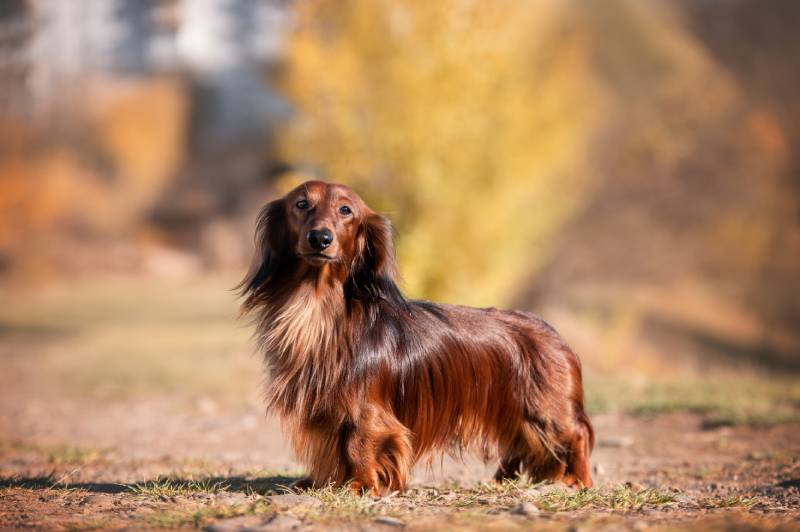
8. They Come in an Array of Colors
The Wiener really does come in a variety of looks, including a host of patterns or markings and colors. Common color combinations include black and tan, black and cream, and blue and cream, but there are more than 10 other color combinations. Not all are officially recognized by kennel clubs, however.
9. They Can Live a Long Time
Although the breed is prone to certain health conditions, the Dachshund can live a very long time. They are said to have an average life expectancy between 12–16 years, but several Wiener dogs have been named the oldest dogs in the world by the Guinness Book of Records.
Chanel and Scolly have held the title of the world’s oldest dog and were pure Dachshunds. A third dog, Otto, also held the title and was a Dachshund cross.
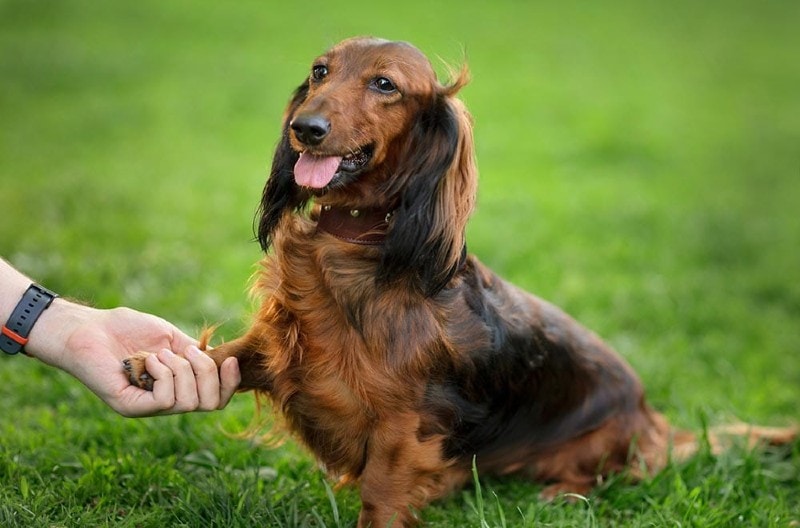
10. Dachshunds Are Vocal Dogs
The breed has a lot of characteristics and traits, some of which are beloved by their owners. One of the less popular attributes of the breed, at least with some owners, is that they are very vocal dogs. This is another downside of the dog’s history as a hunting dog, as it would have barked to alert its handler to game.
11. They Typically Dislike the Rain
The low belly of the breed means that it is not only prone to rain from above but splashes from puddles and the ground underneath. This tends to mean that the Wiener dog does not enjoy going out in wet conditions, so you should expect some resistance if it’s raining out.

12. Dachshunds Are Prone to Back Problems
It might not be that surprising to learn but Dachshunds are prone to back problems. In particular, they have an increased risk of developing Intervertebral Disc Disease, or IDD, which is a hereditary condition. Approximately a quarter of all Dachshunds will develop back problems at some point in their lives.
13. They Are Prone to Overeating
Back problems can be exacerbated if your dog is carrying too much weight, which makes it especially unfortunate that the Dachshund loves to eat. Most will not stop eating and won’t turn away from a treat, so it is down to owners to ensure that their sausage dogs do not eat too much and put on weight.
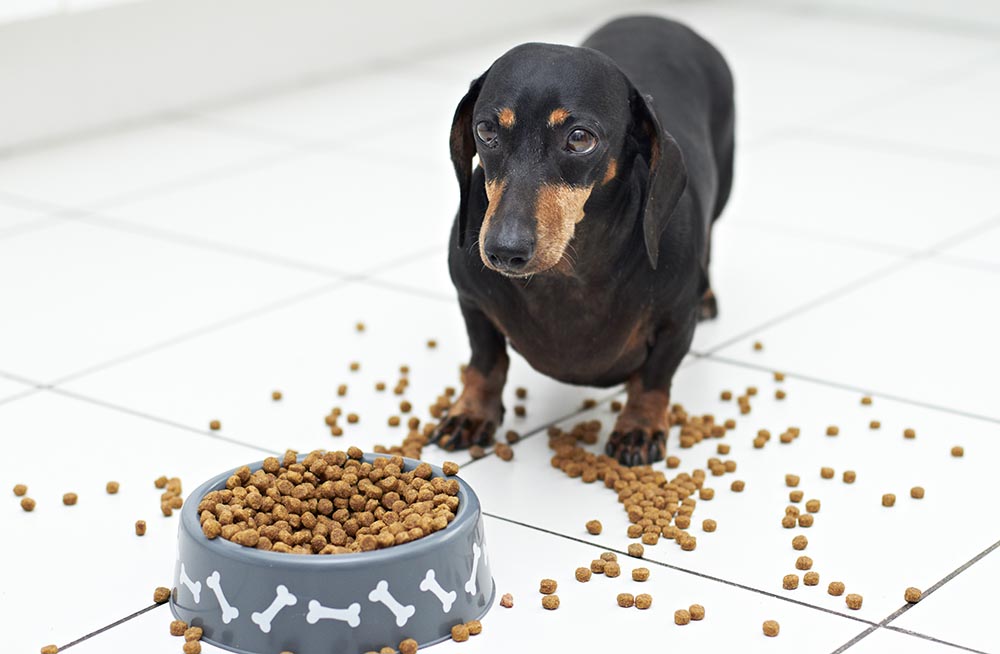
14. The Breed Needs Plenty of Exercise
One way to keep the weight off and ensure that the Dachshund stays as fit and healthy as possible is through regular exercise. As long as it isn’t raining outdoors, this breed typically enjoys getting out for exercise. They can take to sports and activities including canine agility.
15. There Are Dachshund Races
Another sport that the breed tends to enjoy is racing, although the Dachshund is certainly not built for speed. There are a few Dachshund races and race groups around the world, but it is not considered a serious sport and you should never push your Dachshund too hard.
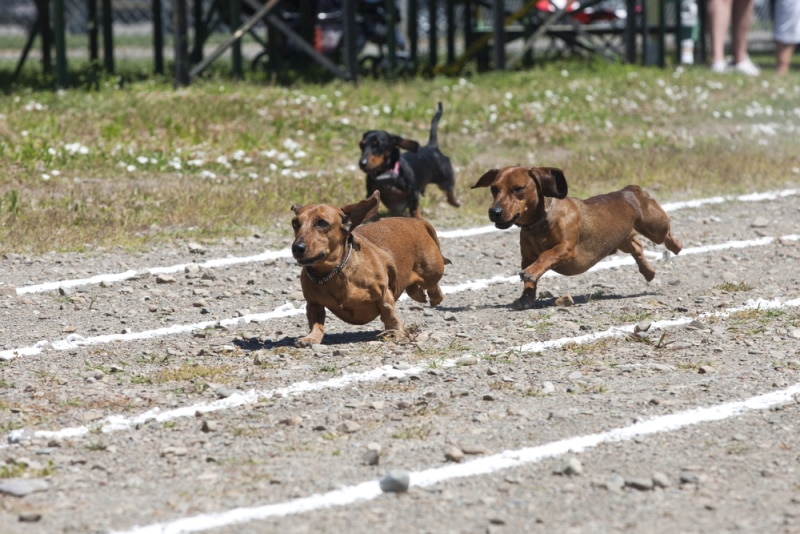
16. The Hotdog Is Named After the Dachshund
The Dachshund has a lot of nicknames, including the wiener dog and sausage dog. While you would be forgiven for thinking the dog was named after the popular snack food, it was actually the other way around. The original name for the snack was the Dachshund sausage because it looked so similar to the breed.
17. They Were Called Badger Dogs During World War I
The proper name, Dachshund, translates from German as “badger dog” because they were bred to hunt badgers. And during World War I, when Kaiser Willhelm’s love of the breed deterred a lot of potential owners from adopting and buying the breed, it was decided that the Dachshund should be renamed and rebranded. In the US, the Dachshund became known as the badger dog, although this soon reverted.
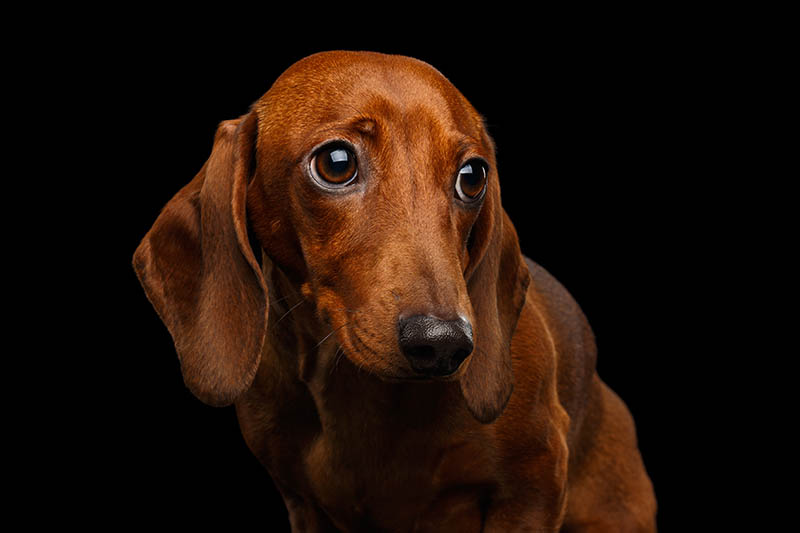
18. Dachshunds Have Been Cloned
In the UK, a competition was held, inviting owners to enter their dogs for the chance to be cloned. The winner of the competition was a Doxie named Winne. Mini-Winnie was cloned using a skin sample from Winnie and gave birth to two puppies herself in 2018.
19. Waldi the Dachshund Was the First Olympic Mascot
At the Munich Olympics in 1972, Waldi the Dachshund made history by becoming the first-ever official Olympic mascot. Waldi was based on a real dog, Cherie von Birkenhof, a long-haired Dachshund. The breed was chosen because it shared many attributes with Olympic athletes.

20. Queen Victoria Loved Dachshunds
Although the breed was first created in the 15th Century, it did not become popular in Germany until around the 17th Century, and only made its way to the U.S. in the 19th Century. In fact, it was Queen Victoria of England’s love of the breed that saw it gain global notoriety, and it is unlikely that the Doxie would be such a popular pet now if it wasn’t for her love of the German breed.
Conclusion
The Dachshund is one of the most popular breeds of dogs in the world. It is loved for its loyalty, energy, and confidence, but it was originally bred to hunt badgers, hares, and other rabbits. Today’s owners can expect their pets to retain many of the properties that made them such remarkable hunters, but they can also expect some of the more challenging attributes, such as a tendency to dig and a very vocal attitude, as well as a high prey drive and some back and health problems.
Featured Image Credit: congerdesign, Pixabay








